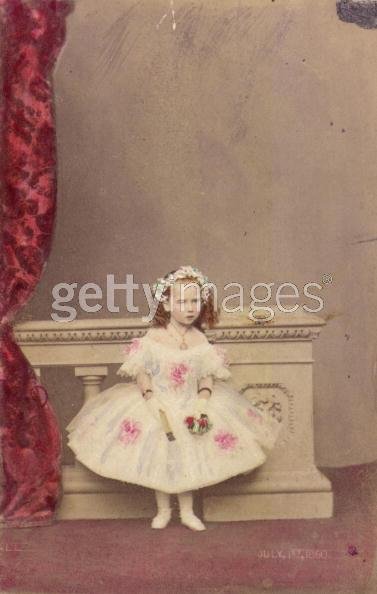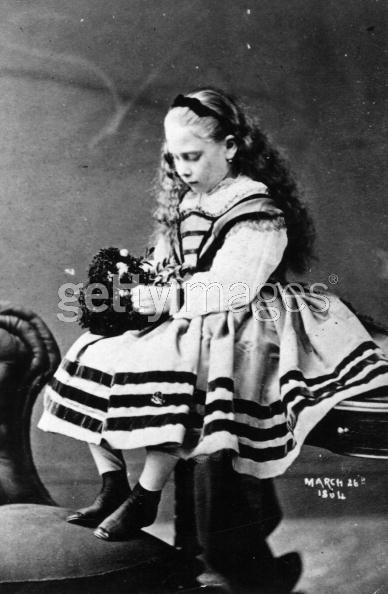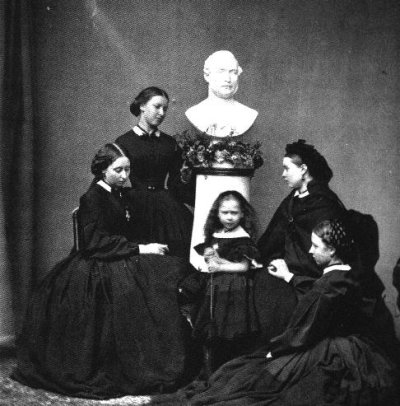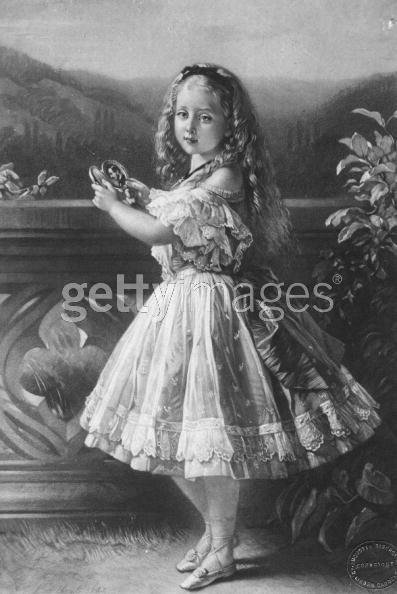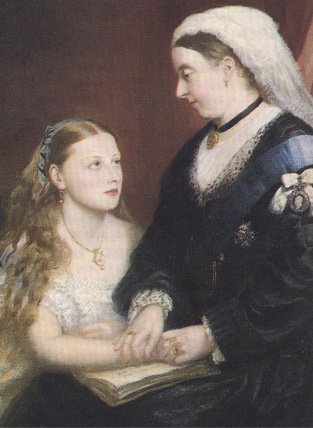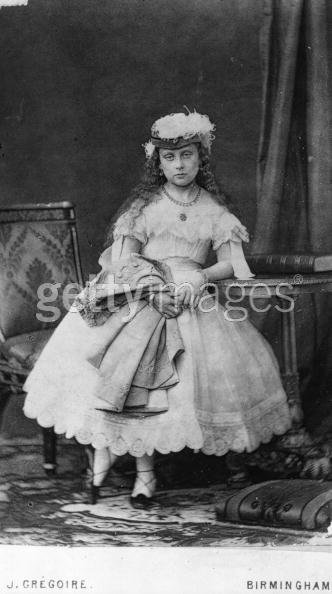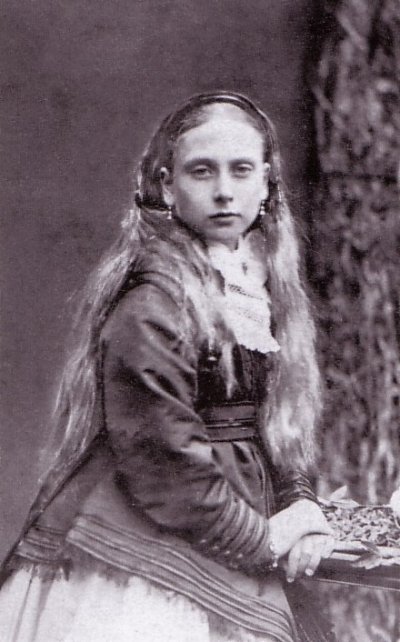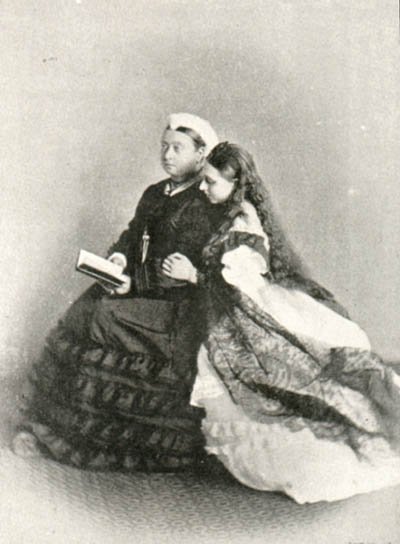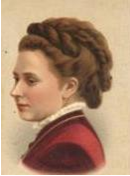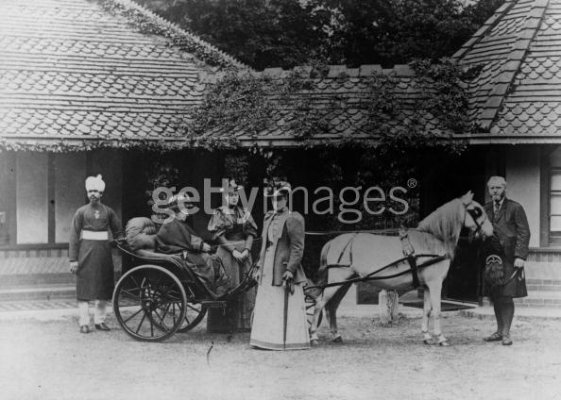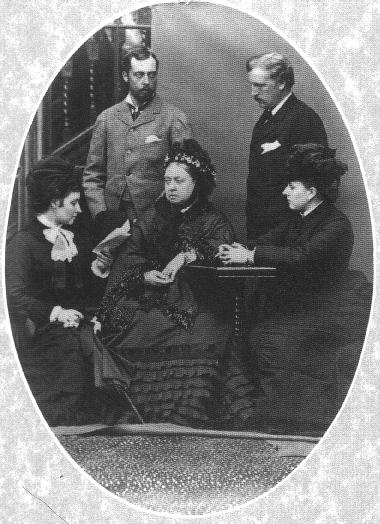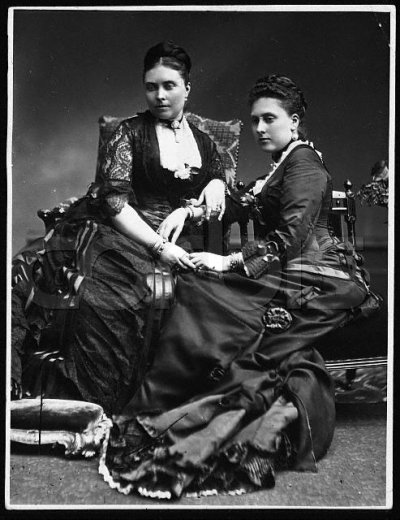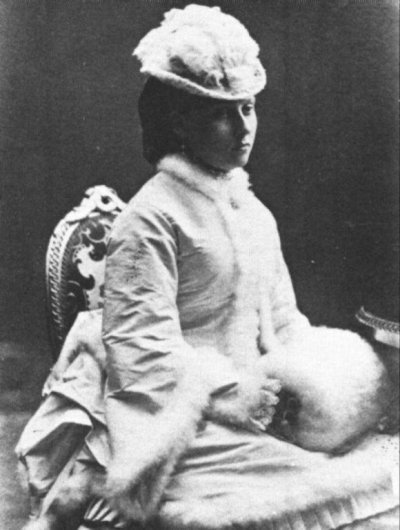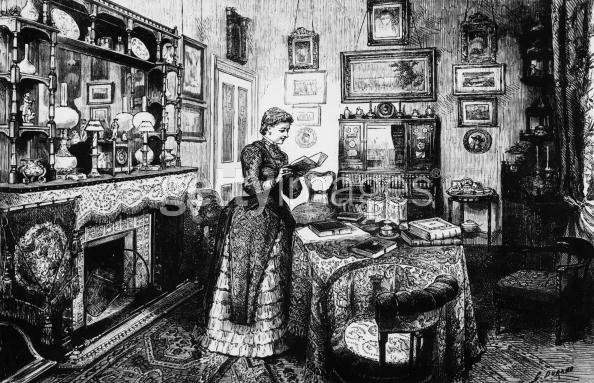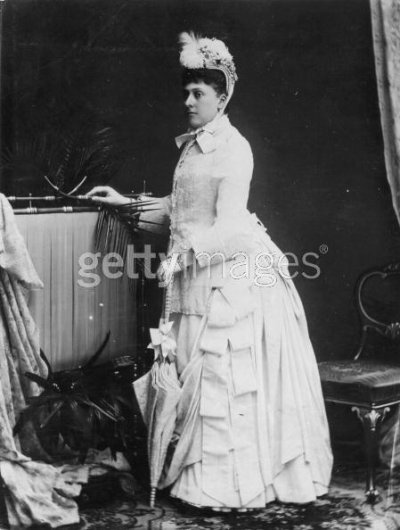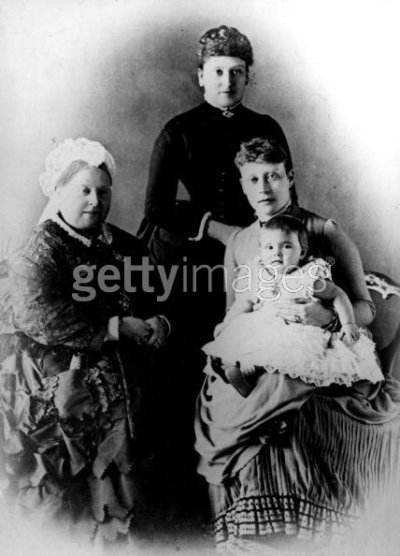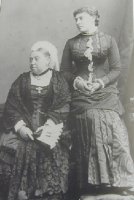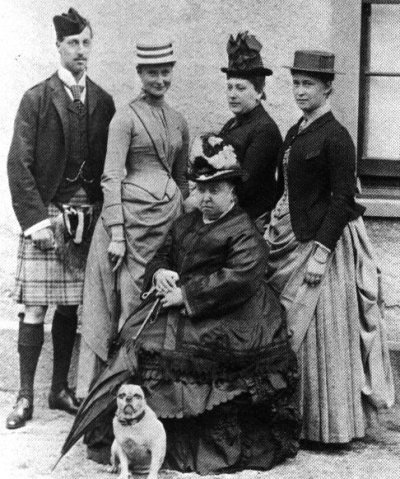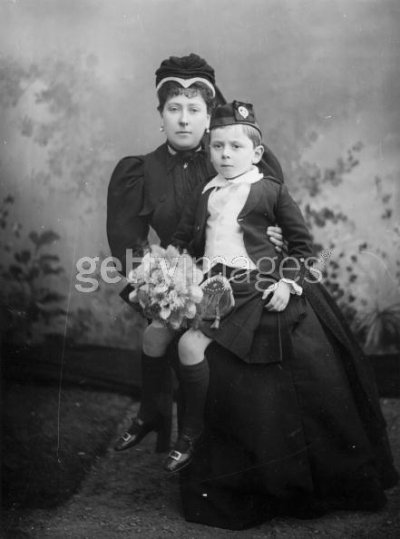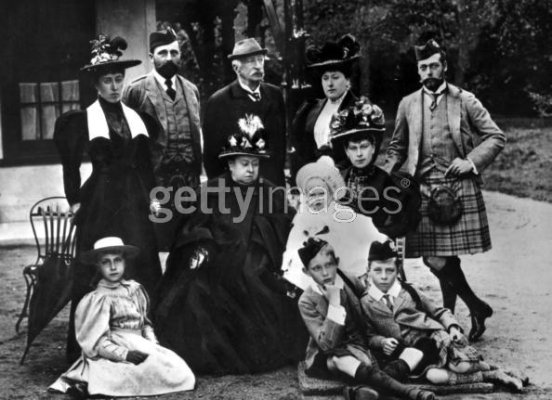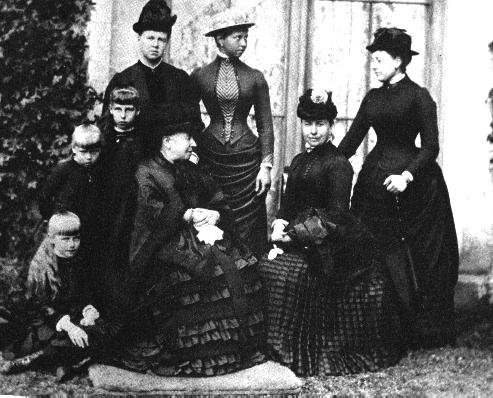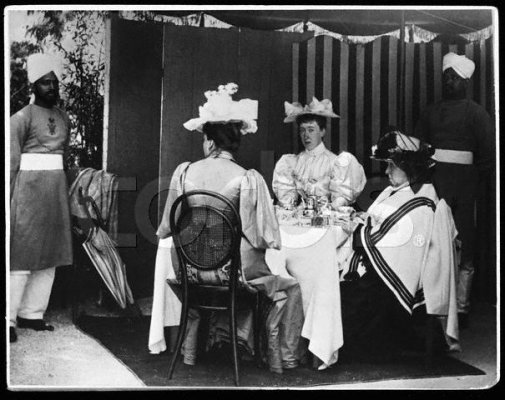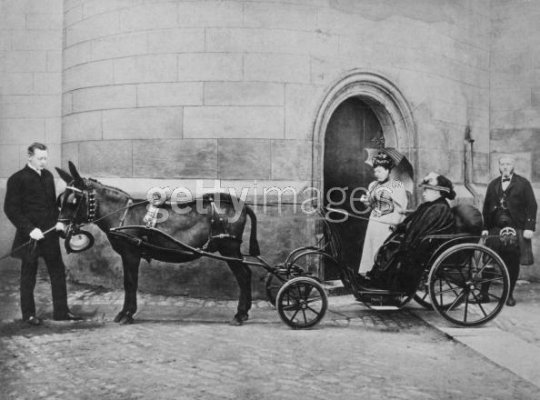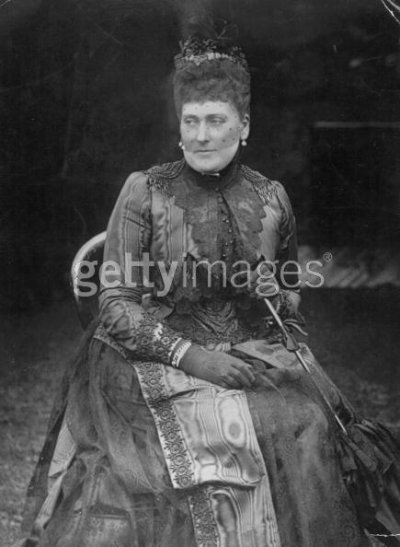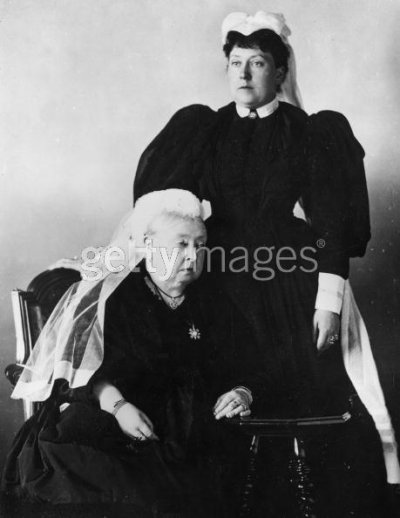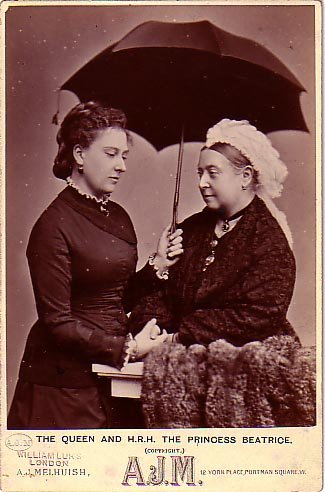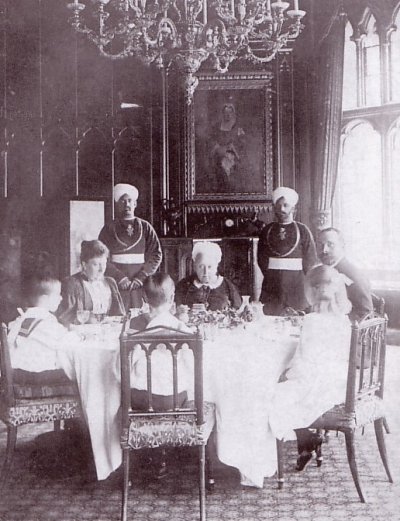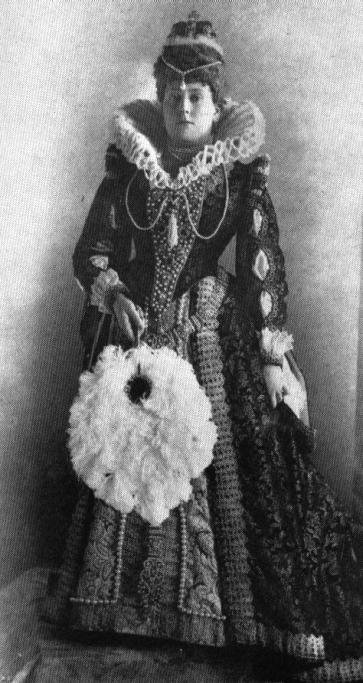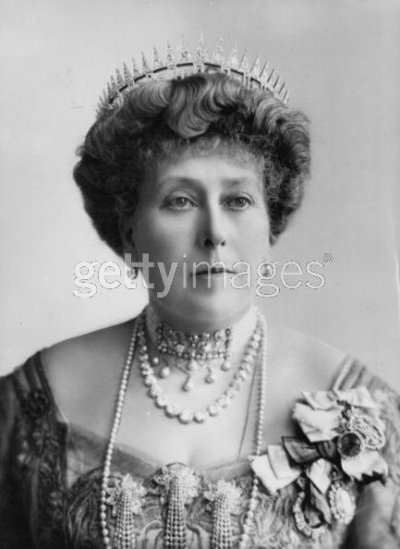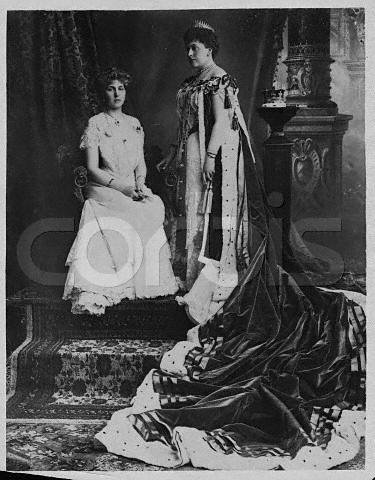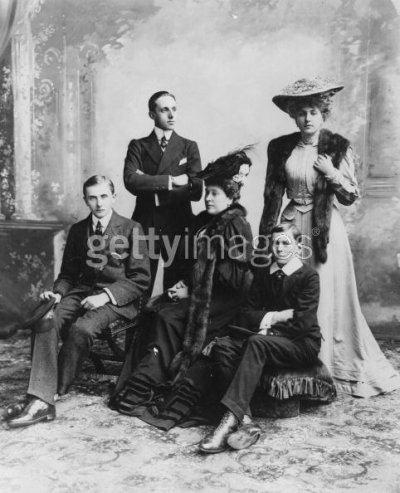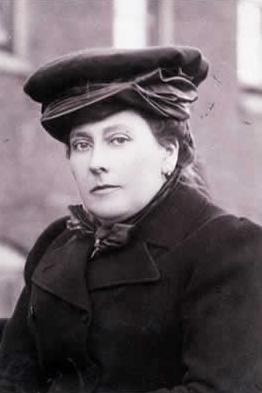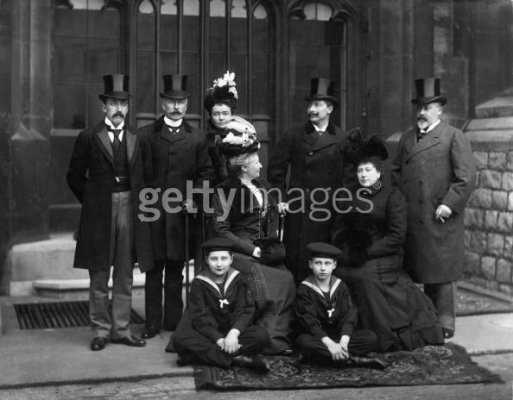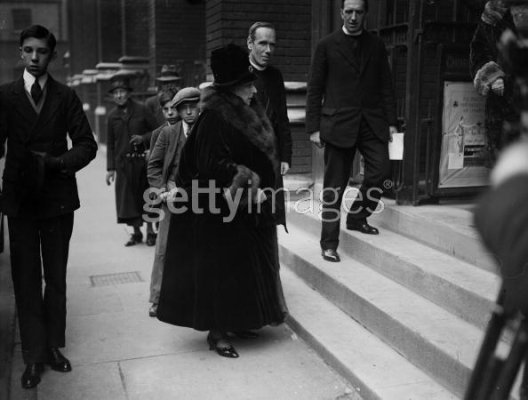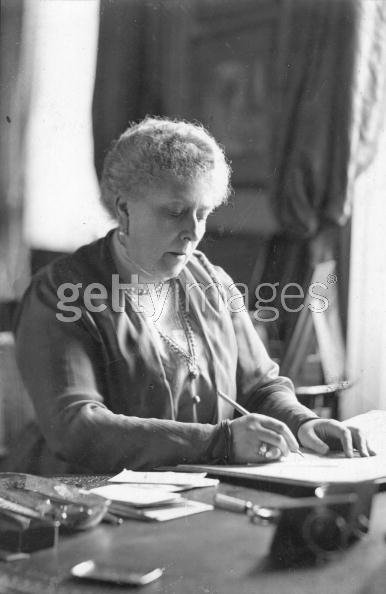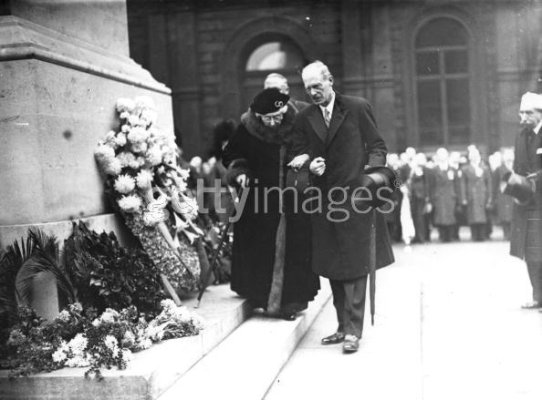Beatrice Mary Victoria Feodore was born on April 14, 1857. She was Queen Victoria's ninth and last child. Princess Beatrice was only four years old when her father, Prince Albert died on December 14, 1861. By the end of that terrible day, the worst in her life, Queen Victoria went into the nursery where little Beatrice was sleeping and took the child into her own bedroom where she wrapped her in Albert's night clothes and spent all the night sleepless, waiting for the dawn. Despite her young age, Beatrice, like her siblings, had to wear the heavy mourning dresses. Altough bright and vivacious, the little girl suffered the heavy atmosphere of the Victorian mourning court, fact that contribute to turn her into a shy young woman.
When Beatrice was sixteen, she met Louis Napoleon, Prince Imperial of France and son of the exile emperor Napoleon III and his wife Eugenia de Montijo. A romance was about to spring out between the young pair but it stayed in nothing. Queen Victoria's plans for Beatrice were others; she wanted her to be by her side for the rest of her life.
In 1874, Beatrice was allowed to be present during the routine audiences of her mother with the Prime Minister Benjamin Disraeli. This should have ment too much for the shy and lonely Princess, since Disraeli was kind and payed special attention to her.
In April 1884, when Beatrice was 27, she and her mother went to Hesse Darmstadt to attend the wedding of her niece Victoria, Princess Alice's eldest daughter. Princess Victoria's bridegroom was Louis of Batenberg, the eldest of four young princes, who were sons of Prince Alexander of Hesse, unlce of Victoria's father, Grand Duke Louis IV of Hesse Darmstadt. Prince Alexander had made a morganatic marriage with a polish countess, Julia Theresa von Hauke, a lady in waiting to Alexander's sister the Tsaritsa of Russia, Maria Alexandrovna, wife of Tsar Alexander II. As product of a morganatic marriage, the four princes were excluded from the Hesse Darmstadt succesion. Their mother was created Princess of Battenberg and they assumed the maternal title. Louis' s brothers were Alexander, Franz Joseph and Henry. When Beatrice arrived in Darmstadt she met the youngest of the Battenberg brothers, Henry, who was different from her in every aspect; while Beatrice was big and quite fat, Prince Henry was "athletic and muscular, dark handsome and with a quite small phisiognomy. Unlike Betarice, who was shy, he was kind and charming. Since rthe firt moment Henry caused a deep impression in Beatrice; About Henry's feelings, it is difficult to magine what it was that the Prince found in Beatrice to attract him, except the fact that she was the daughter of the Queen of England. Beatrice and Henry became secretly engagged in Dramstadt and when she returned to England, she told her mother she had fallen in love with Henry. The Queen was infuriated, she wouldn't allow Beatrice to marry because she was her companion and secretary. After eight months of quarreling about the matter, Queen Victoria, at last agreed, thanks to the inervention of her eldest son Bertie and her son in law Louis of Hesse, who told her that her attitude towards Beatrice was bizarre. The only condition she imposed was that the couple would live with her for the rest of her life. Beatrice accepted and Henry, who had nothing to loose being a semi-impoverish and semi royal princeling and having no future in the Prussian Army, also agreed.
Prince Henry of Battenberg and Princess Beatrice of Great Britain were married on July 23 1885, at Wippingham Church in the Isle of Wight. Beatrice wedding dress was skin tight over which she wore a lace tunic that had belonged to Catherine of Aragon, Henry VIII's first wife. She was the only of her sisters to be allowed to wear Queen Victoria's Honiton lace veil.
Once married, Henry was unbusy with nothing to do but fathered children. In 1886, the first Battenberg child was born; he was named Alexander,usualy called Drino. He was fallowed by a girl, Victoria Eugenia, in 1887. The third child, again a boy, was born in 1889; he was named Leopold and unfortunately he was haemophiliac. As her mother and sister Alice, Beatrice was a carrier of the haemophilia gene and transmitted it to her son. The fourth and last child, Maurice, was born in 1891; some authors say he also was an haemophiliac, but others say he was not.
In 1889, Queen Victoria honoured her son in law by appointing him governor and captain of the Isle of Wight. It was not a very hard job so it didn't take Henry out of his unbusiness. He used to spent his time educating and teaching his children. In 1890 Beatrice began to work on the translation into English of "The Adventures of Count Georg Albretch or Erbach" by Emil Kraus; the book was published later that year.
A very close friendship sprang out between Beatrice's sister Louise, Duchess of Argyll and Prince Henry. Louise even wrote that he was almost the greatest friend she had; after Henry's death in 1896, she eventually told Beatrice that she had been Henry's confident. This fact create a division between Beatrice and her sister,
In 1895, in the African territory of Ashanti, in Ghana, under the rule of King Prempeh, human sacrifice had become a usual activitiy and raids were made amoong the native tribes that lived along the Golden Coast border, in order to get people to be sold as slaves. The British Government demanded Prempeh to adhere to 1874 Treaty for peace and order in Africa. As the African King refused, it was decided to send an expedition to Ashanti to restore order, under the command of Sir Francis Scott. One day, when Queen Victoria, Princess Beatrice and Prince Henry were finishing breakfast, Prince Henry suddenly asked his mother-in-law for her permission to join the Ashanti Expedition. The Queen said that such matter was out of question. Beatrice supported her husband and told her mother that he had set his heart upon going, that he was tired of his inactivity and wanted to do something for England. When Prince Henry wrote to the Queen, "I hope, by voulunteeering in a national case, to prove my devotion to my adopted country", she finally accepted.
Before sailing, Prince Henry told to Lord Harris: "I am an Englishman and I want to show the people of England that I am ready to take the rough with smooth. I know there is no glory out of it and I know of the dangrer of subsequent ill-heañth and perhaps death from malaria, which I know is so great in that country". (Duff).
On December 6, he came to the Queen's presence to say good bye. He knelt before her and kissed her hand; she embraced him. The next day, December 7 1895, he sailed on board HMS Coramandel form the Royal Albert Dock on his way to Africa. Once in Ghana, Prince Henry started his way, with the main column of the Expeditionary Force, to Kumasi, capital of Ashanti. When they reached the River Pra on Jnauary 4th, some cases of fever had sprang out among the troop. At Prashu, Prince Henry and Mayor Ferguson went for an evening stroll and the Prince noticed the Mayor had begun with signs of fever. Two days later he was dead. Prince Henry and the rest of the troop continued their way to Kwisu, forty miled from Kumasi. They reached the place on January 10th. Here Pricen Henry fell ill with malaria and the doctor ordered him to return to Cape Coast. Despite his protests he was put on board HMS Blonde and sent back to England, but as the ship passed the coaust of Sierra Leona, on the evening of Monday 20th, Jnauary , 1896, Prince Henry died. That same day, at Kumasi, King Prempeh submitted to the Governor of Cape Coast.
Before his death, Prince Henry had sent a last message to Princess Beatrice: "In case I die, tell the Princess for me that I came here not to win glory but for a sense of duty" When Princess Beatrice learnt of her husband's death, she only said: The life is gone out of me".
After Henry's death Beatrice went to the south of France to recovered. It was the first time she was allowed to be on her own, appart from her mother's side. After some time she decided to go back to her routinary activities; for the next five years she again became her mother's secretary and companion. Her brother Bertie, the Prince of Wales, kept always a rancour against his sister for being the Queen's confident,while he, as heir to the throne had been always put aside by his mother from important matters.
When her mother died in 1901, Beatrice had no property of her own. All of the Queen's properties passed to Bertie, now King Edward VII, by his right of sovereignity. The King decided to gave Osborne House, where Beatrice and her family had spent much time, and which she considered she had some right to it, to the Government and make a museum of it. Beatrice opposed to her brother's desition but at last she had to accept and moved from the big house into the smaller Osborne Cottage, inside the Osborne grounds.
In 1906, Beatrice's daughter, Victoria Eugenia, married King Alfonso XIII of Spain. She accompanied her daughter, first to Biarritz, where the couple were officially engagged and then to Spain where they got married. Victoria Eugenia, as her mother, was also a carrier of the haemophilia gene, and introduced it to the Royal House of Spain.
Art the outbrweak of World War I, Beatrice established her own hospital, The Princess Henry of Battenberg Hospital for Officers. During this war, she suffered a graet pain; on October 27, 1914, her younger son, Maurice, was killed in action on the Belgian front line. Beatrice asked that her son was buried among his comrades in Belgium. In 1922, her other son, the haemophiliac Leopold, died after an emergency surgery.
Beatrice spent the last two decades of her life suffering from rheumatism. In 1931, she fell down in Kensington Palace, where she now lived, breaking two arm bones; she would spent the res of her life under medical care. She occupied her time in editing her mother's jurnals, eliminating all passages that could be embarasing for the Queen's memory or for those she had written about. Beatrice rewrote 111 volumes of her mother's originals. They are preserved today in the Royal Archives in Windsor. Among the documents that Beatrice eliminated form her mother's papers, were 30 volumes of the Queen's letters to her children Alfred and Alice. Beatrice's last work was the translation from German into English of the dairies of her great-grandmother, Augusta of Reuss (Queen Victoria's maternal grandmother) She turned the diary into a book called "In Napoleonic Days", published in 1914.
Beatrice became the last surviving child of Queen Victoria in 1942 when her brother Arthur died at age 91. During the last days of her life, she remained appart from public life at Brantridge Park in Sussex. In her last days, her nieces, Princess Helena's daughters, Helena Victoria and Marie Louise, joined her. Beatrice died during sleep at 5:10 in the morning on October 26, 1944, when she was 87 years old. Her daughter Victoria Eugenia arrived just in time to be with her mother. Her son Alexander asked the King's permission to take his mother's body to Whippingham Church in the Isle of Wight to lay next to her husband. - taken from the book Victoria's Daughters


